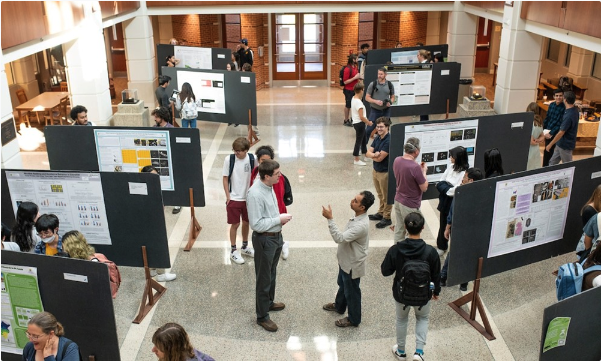Document Type
Poster
Publication Date
Fall 10-6-2023
Abstract
Environment and Climate Change Canada recently completed a standardized protocol of ecotoxicity testing for Oppia nitens, a soil oribatid mite that performs crucial functions to support ecosystem services. Consequently, O. nitens is now recommended among the class of soil invertebrates for ecotoxicity testing, however, its applicability is limited by the paucity of data on its avoidance behavior to contaminants in soils. In this study, we examined the avoidance behavior of O. nitens to three different conventional microplastics (polyvinyl chloride/PVC, polyethylene/PE, polystyrene/PS) and two bioplastics (poly vinyl alcohol/PVA and sodium polyacrylate/NaPa) at five different concentrations following standardized guidelines. PVC and PE concentrations ranged from 857-9000 mg/kg. PS concentrations ranged from 92.59-972 mg/kg. For PVA and NaPa, concentrations ranged from 1543-16200 mg/kg. The O. nitens were exposed to the concentrations for 48 hours using a two-chamber test, to permit the choice between clean artificial and contaminated soil. Our results showed that O. nitens had an attraction to PVC at the two lowest concentrations, but no significant difference in response to the other concentrations. PE indicated an attraction to the lowest three concentrations, but an avoidance to the highest two concentrations (5000 and 9000 mg/kg). PS showed an approximate 75% avoidance at 300 mg/kg, but did not show avoidance at the other higher concentrations, which indicated immobilization or death. PVA indicated avoidance at the two highest concentrations (9000 and 162000 mg/kg) but no significant difference in response at the other concentrations. NaPa showed significant attraction at 9000 mg/kg, but significant avoidance at 162000 mg/kg. Attraction to low levels of contaminants has been termed hormesis, which can be seen especially if they are minutely required for normal metabolism. However, the hormesis-like pattern observed for the PVC, PE, and PS in this study could not be explained since microplastics are not a requirement for metabolic activities in mites compared to copper and zinc, where other studies have shown attraction to low concentrations of these metals. These results indicate that PS was the most toxic contaminant (LC50 = 172.7 mg/kg), and that bioplastics were not as lethal in comparison to the conventional microplastics (PVA LC50 = 8050.012 mg/kg and NaPa LC50 =14553.74 mg/kg). Therefore, bioplastics could potentially be a better alternative to conventional microplastics. The O. nitens is a promising species for avoidance testing in soil ecotoxicology and of great ecological relevance for assessing soils contaminated with pollutants. Since this is the first study investigating O. nitens avoidance to microplastic spiked soils, more studies are needed to evaluate its net responses to varying chemical classes in laboratory tests and applicability in contaminated ecosystems.
Recommended Citation
Pasini, Catarina Zabot; Carr, Kaija; Shaffer, Nina; and Akinwole, Philips, "Avoidance behavior ecotoxicity testing of Oppia nitens in conventional microplastic and bioplastic spiked soils." (2023). Annual Student Research Poster Session
. 113, Scholarly and Creative Work from DePauw University.
https://scholarship.depauw.edu/srfposters/113









Comments
Funding provided by the Science Research Fellows Program Award to PA, the DePauw’s Student Research & Artistic Grant, and the Dr. Hendricks travel fund of Biology Department to KC and NS